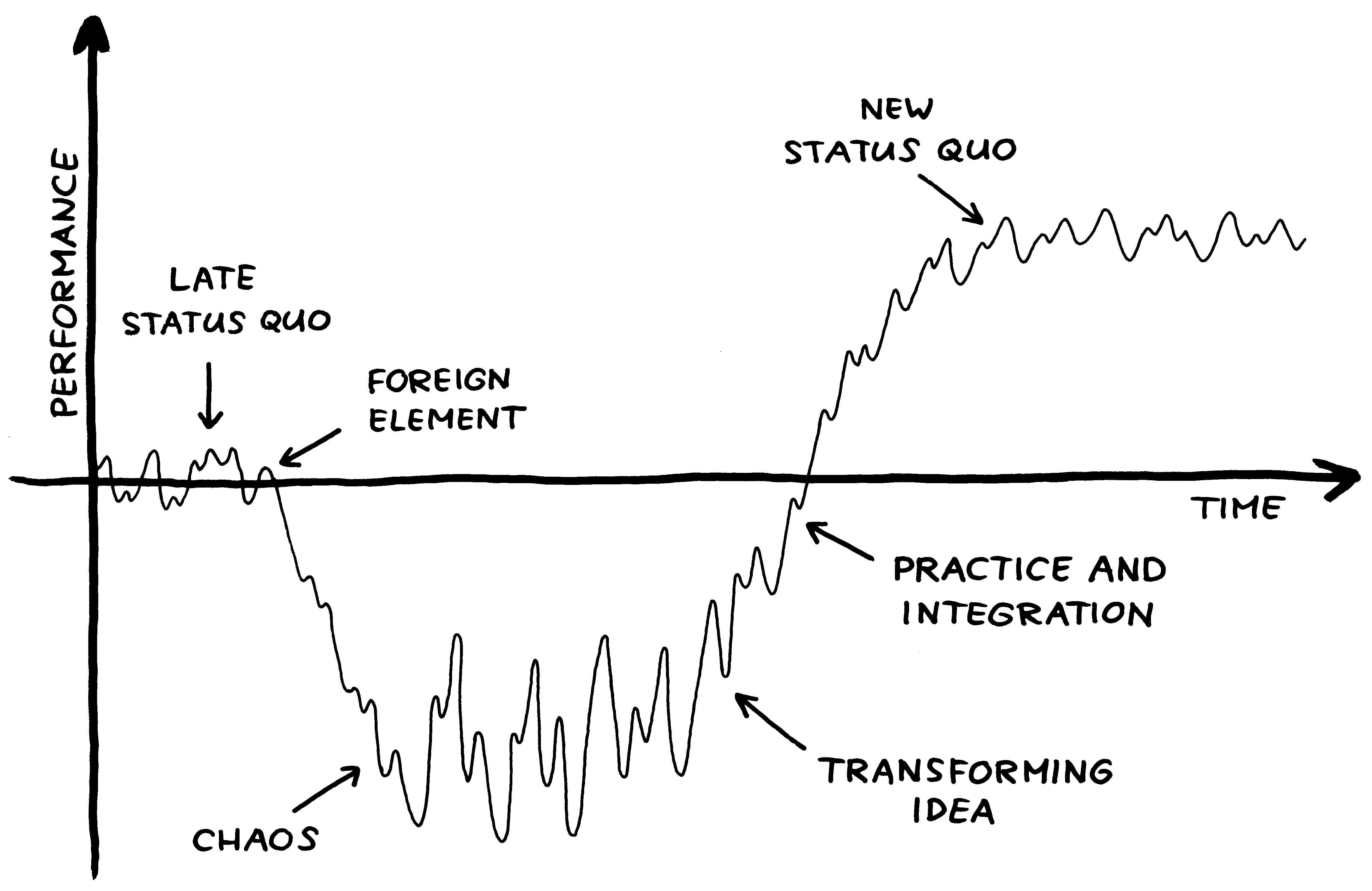The Power of Incremental Change
Change is hard. I won’t win any awards for that revolutionary statement, but it’s a fact we as innovators and agents of change often forget. Individuals and organizations are not naturally wired to accept and adapt to change, and can often seem like they are unable to accept change. Virginia Satir, author and therapist, best illustrated this natural response to change with her Change Process Model:

In this model, as custom software developers, we’re faced with the ever-present challenge of increasing performance to improve the status quo; and as consultants, we’re frequently challenged by organizations’ conflicting desires and resistance through the pit of chaos. Because of these two unique perspectives, we’re always searching for ways to achieve more change, faster. Here are two ideas we’ve seen work well in practice.
Low Intensity, High Frequency
Since change is so difficult, it’s our natural tendency to avoid difficulty and reduce the amount of change. But it’s not the frequency of change that’s the problem, it’s the intensity of that change. Dan Ariely, in one of his famous TED talks, scientifically proved that our brains encode pain intensity much more than time. We’ve found that this perspective rings true in change as well.
So instead of trying to boil the ocean, we propose taking changes in small incremental steps, which are more palatable to our human nature. This lower intensity may seem like more work since more changes are happening, but the consistency of low-intensity changes partnered with realized value drives trust and shortens the chaos pit found in radical change.
Self-Guided Change
We also know that all change takes time. Not for the top-down message to be sent out, instigating change as the foreign element, but as the daily operators tasked with adjusting to the change. What we’ve found is there are ways to short-circuit the chaos chasm, and it’s easier than you think.
Returning to Satir’s model, instead of instigating change from a foreign element, how can we instigate change from a transforming idea? In controlled environments, like organizational changes, we’ve found that by being transparent and letting the daily operators (the users) suggest the change, we’re able to expedite or skip the chaos gap.
In order to have the operators themselves suggest the change, we have to provide them with the right questions and challenges to come up with the right ideas. In our most successful cases, this has come in the form of sharing the current status quo, the factual constraints, and asking how we achieve the new status quo. In beautiful serendipity, we’ve even had these users wireframe the exact new version we were there to train them on!
These two approaches help define a culture of change, that is only truly possible with the ownership and control that comes with custom software. Because our clients own their software, they can control the rate of change and align it with their business objectives, unlike organizations that are beholden to the cadences of their software providers.
What techniques has your organization used to adopt change?
Keep changing,

Co-Founder, CEO
